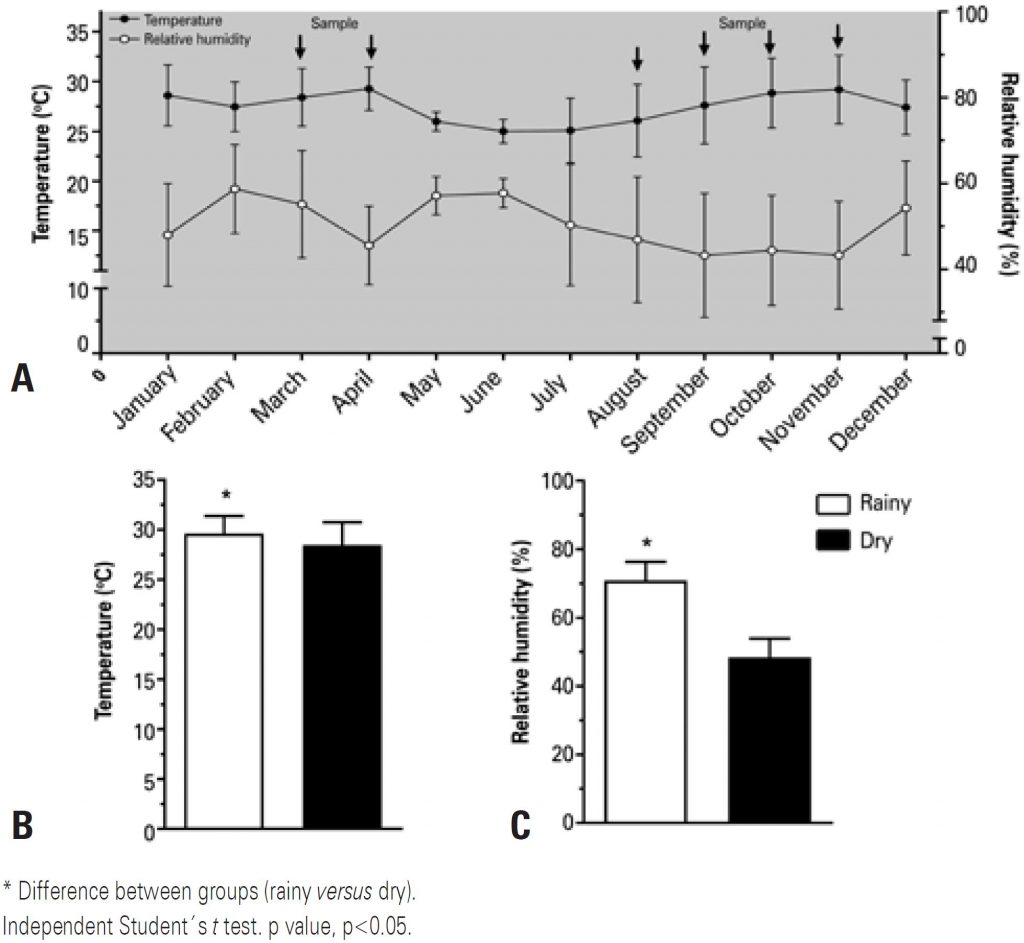einstein (São Paulo). 17/Sep/2021;19:eAO5744.
Impact of climate variability on exercise-induced bronchospasm in adolescents living in a semi-arid region
DOI: 10.31744/einstein_journal/2021AO5744
ABSTRACT
Objective:
To examine the impact of climate variability on the occurrence of exercise-induced bronchospasm in the rainy and dry seasons of a Brazilian semi-arid region.
Methods:
This sample comprised 82 adolescents aged 15 to 18 years, who were submitted to exercise-induced bronchospasm assessment on a treadmill and outdoors, during the rainy and the dry season. Anthropometric variables, sexual maturity and forced expiratory volume in the first second were analyzed. Air temperature and humidity, decline in forced expiratory volume in the first second (%) and frequency of bronchospasm were compared between seasons using the independent Student’s t test, the Wilcoxon and McNemar tests, respectively. The level of significance was set at p<0.05.
Results:
The mean age was 15.65±0.82 years. Air temperature, air humidity and decline in forced expiratory volume in the first second (%) differed between seasons, with higher air temperature and humidity in the rainy season (29.6ºC±0.1 and 70.8%±0.6 versus 28.5ºC±0.2 and 48.5%±0.6; p<0.05). The decline in forced expiratory volume in the first second (%) was greater in the dry season (9.43%±9.97 versus 12.94%±15.65; p<0.05). The frequency of bronchospasm did not differ between seasons.
Conclusion:
The dry season had a negative impact on forced expiratory volume in the first second in adolescents, with greater decrease detected during this period. Findings of this study suggested bronchospasm tends to be more severe under low humidity conditions.
233

